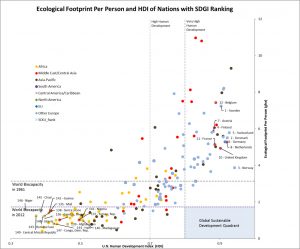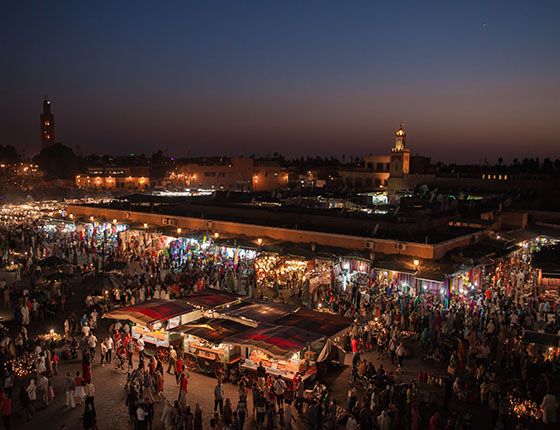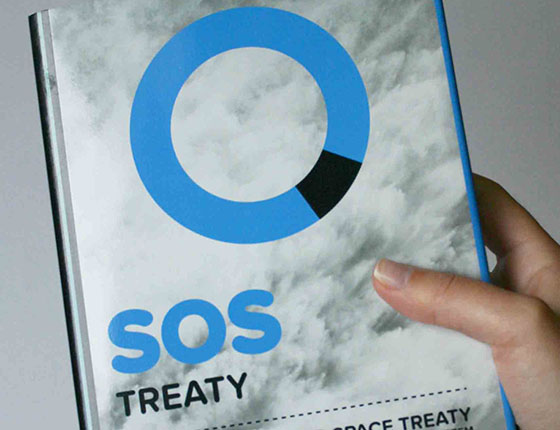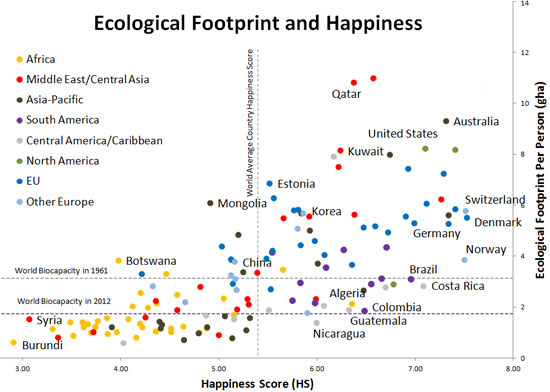It’s been a busy day for launching new country rankings. Today (July 20), the Sustainable Development Solutions Network (SDSN) released a 427-page report ranking countries by 77 indicators tied to the 17 UN Sustainable Development Goals approved last year. The SDG index averages countries’ performance on those goals. Each goal is assessed by a mélange of indicators, including poverty and obesity rate, traffic deaths, literacy rate, seats held by women in national parliament, access to water and electricity, unemployment, mobile broadband subscriptions, wastewater treatment, and carbon emissions.
How does compliance with the UN Sustainable Development Goals SDGs square with achieving development that can be sustained within the means of our planet? Ultimately, to be sustainable, development need to fit within our planet’s resource budget. Therefore sustainable development can be mapped as development achievement, on the on hand, and resource demand, on the other.
The graph below summarizes the results. It shows the position of the top and bottom 10 countries on the SDG index in terms of their Human Development Index scores and their Ecological Footprints.
(Click image to enlarge)
The United Nations Human Development Index (HDI) measures a country’s average achievements in the areas of health, knowledge, and standard of living. An HDI higher than 0.8 is considered “very high human development.” The Ecological Footprint tells us how much of the earth’s bioproductive areas are needed to provide for that development. An Ecological Footprint less than 1.7 global hectares per person makes a country’s resource demands globally replicable.
What this graph shows is that fulfilling the Sustainable Development Goals is no guarantee for sustainability. The top-ranked nations on the SDG index all have high Ecological Footprints. If everyone in the world lived like them, we would need more than three planets. In fact, it seems that there may be a tension as material development achievements are far more prominent in the SDGs than the need to preserve the underlying natural capital.
This leads us to the second sustainability index that came out today: the Happy Planet Index from the New Economics Foundation. This index has far fewer ingredients than the SDSN index: The HPI is based on a ratio of a country’s well-being measurements (such as life expectancy, equality and satisfaction) divided by its Ecological Footprint. It measures who gets the best lives per unit of renewable natural resource.
(Click image to enlarge)
The Happy Planet Index results differ markedly from the SDSN index: The top country is Costa Rica, home to amazing biodiversity and residents who have higher well-being than the residents of many higher-income countries, including the US and the UK. Residents in Costa Rica also live longer than Americans. All this is achieved with an Ecological Footprint per person that is one third of the American Ecological Footprint and a GDP per capita that is less than a quarter of that of many Western European and North American countries.
Perhaps the adage money doesn’t buy happiness holds true after all. Or does the SDSN index suggest otherwise?







